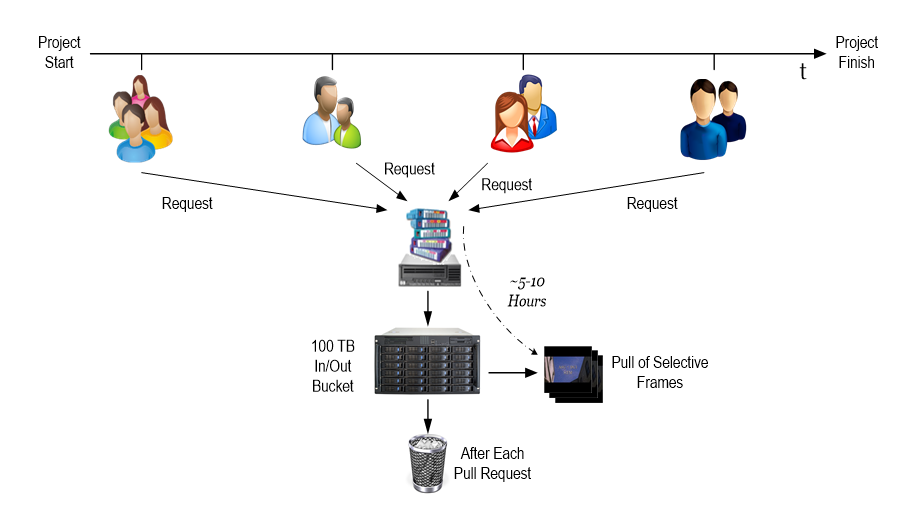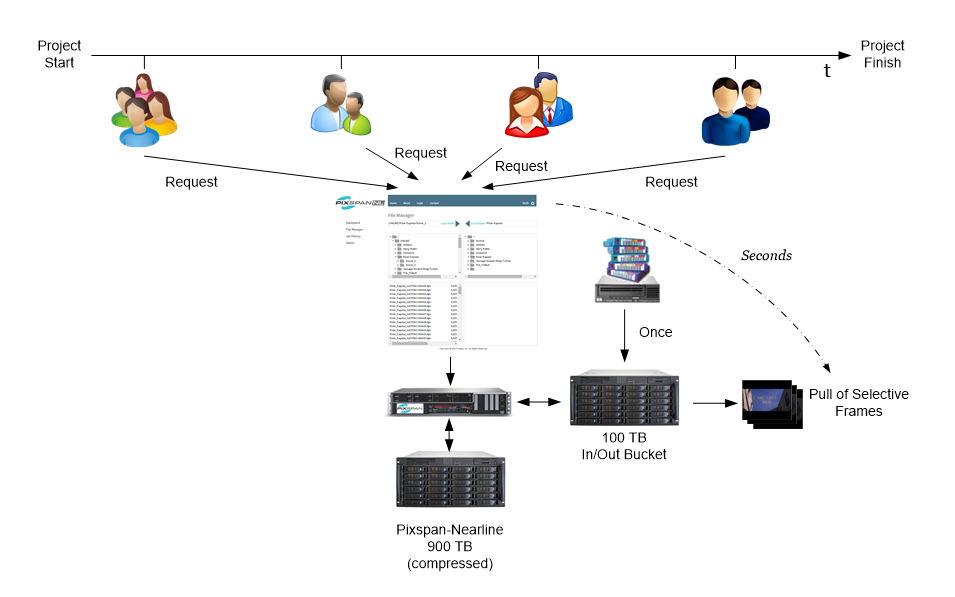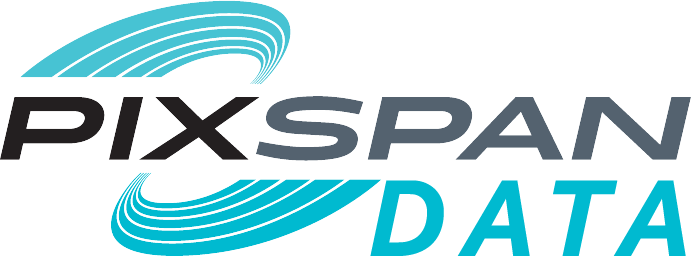LTO NEARLINE CACHE CASE STUDY
A typical Post House Movie Project workflow is to:
- Receive LTO Tapes from the Field
- Load the LTO Tapes into a Temporary Storage Bucket
- Pull Frames from the EDLs into a Working Volume
- Delete the Frames from the Temporary Storage Bucket
- When new Frames are added to the EDLs (recurring cycle):
- The LTO Tapes are loaded back into the Temporary Storage Bucket
- Those new Frames are Pulled into the Working volume
- Delete the Frames from the Temporary Storage Bucket
The problem with this Workflow is that it is very time consuming to reload the Temporary Storage Bucket from LTO. LTO-6 has a 140 MBytes/second maximum transfer rate, which means that it takes a minimum of 2 hours to load 1 TByte of Frames. During that time, Workers are likely waiting for those frames to continue their work. This Workflow is shown in the following diagram:

The main reason that LTO is used in this Workflow is that it is very inexpensive. Storing the entire project files on Nearline Storage can be cost prohibitive. Though, cost savings in equipment and tapes may be entirely wiped out by the expense of an idle Workforce.
Pixspan Data solves this isssue by making the Nearline Storage very cost-effective. For typical Cinematic Content, Pixspan Data saves 60% of the Storage Costs by Bit Exact Round Trip™ compressing the Images on the Nearline volume. That means that in most cases, the Entire Project can be held on Nearline Storage, and can be instantly accessed at Nearline Speeds. This Workflow removes the Worker idle time problem, as shown in the following diagram:




